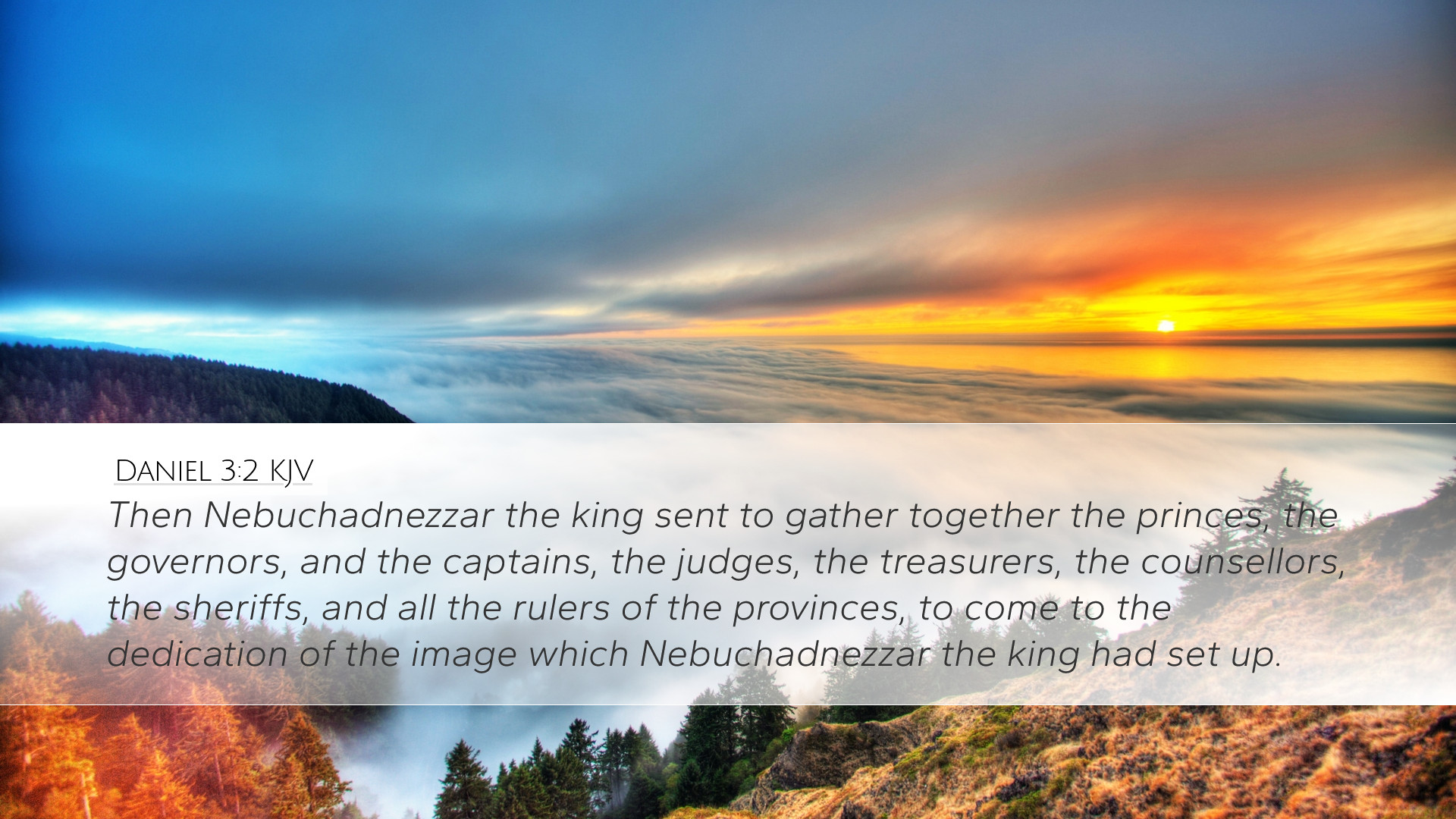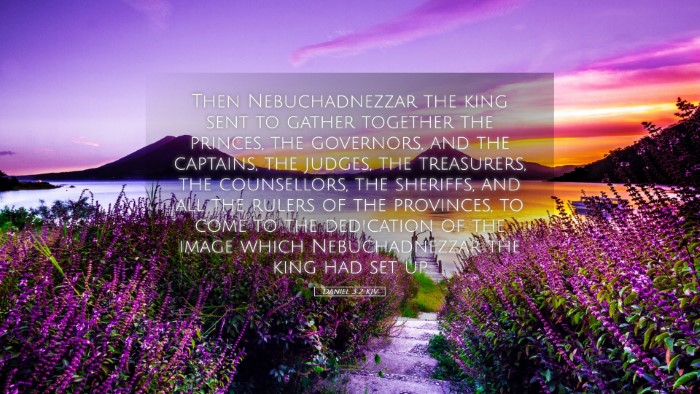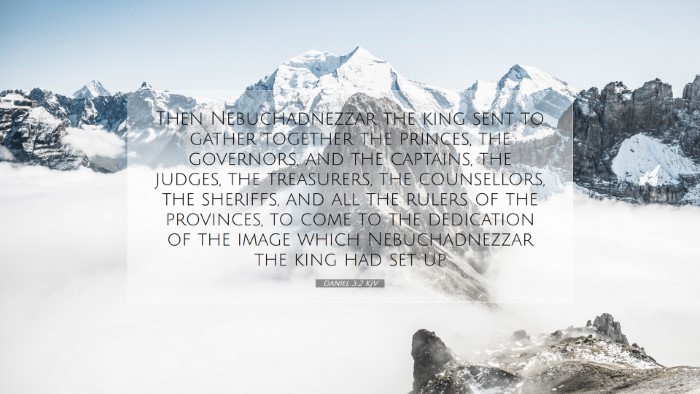Commentary on Daniel 3:2
Verse Context: Daniel 3:2 states, "Then Nebuchadnezzar the king sent to gather together the princes, the governors, and the captains, the judges, the treasurers, the counselors, and the sheriffs, to come to the dedication of the image which Nebuchadnezzar the king had set up." This verse sets the stage for a critical moment in the Book of Daniel, highlighting the king's authority and the initial gathering of officials.
Historical Background
Empire’s Architecture: Nebuchadnezzar II, known for his architectural prowess, is believed to have constructed a massive image (likely of gold) that represented his empire or possibly himself. This act was a demonstration of both pride and a political strategy to unify his realm under a single recognized deity.
Significance of the Gathering: The gathering of various officials signifies the importance of the event; it was not merely a local affair but a state occasion meant to convey unity and loyalty to the king and the prescribed form of worship.
The King’s Authority
Absolute Rule: Matthew Henry notes that Nebuchadnezzar wielded absolute power, illustrated through the invitation to his officials. The diverse roles of those summoned reflect the structured hierarchy of the Babylonian government, emphasizing the king's control over both religious and secular domains.
Symbol of Worldly Power: This image served as a representation of the authority of monarchs in the ancient Near East, often merging religious devotion with political allegiance. Adam Clarke observes that the king's decree was aimed at consolidating his authority and ensuring unwavering loyalty.
Theological Implications
Worship and Idolatry: The setting implies a critical theme in Scripture: the tension between worship of the true God and the idolatrous practices of surrounding cultures. Albert Barnes posits that this moment invites reflection on the nature of worship and the consequences of bowing to false idols.
- Conformity vs. Discipleship: The call to worship the image exemplifies the pressure to conform to societal norms at the expense of personal faith.
- Response of Believers: Although the verse itself does not describe the actions of Daniel or his friends, later passages reveal their resolute stance against idolatry, which serves as a crucial lesson for believers today.
Character Insights
Nebuchadnezzar as a Type: The character of Nebuchadnezzar can be viewed as a type of worldly authority that challenges God’s people. His actions reflect the pride and hubris that often accompanies power, warning leaders of the consequences of putting themselves in the place of God.
Daniel and His Friends: Though not directly mentioned in this verse, the context of Daniel 3 invites a consideration of the unwavering faith of Daniel's friends—Shadrach, Meshach, and Abednego—who act antithetically to Nebuchadnezzar's edict, showcasing spiritual resilience in the face of coercion.
Application for Today's Believer
Modern Parallel: In a contemporary context, this verse challenges believers to examine the images they are tempted to bow to. Whether it be societal pressures, cultural norms, or personal ambitions, the call for faithfulness remains paramount.
- Courage in Faith: Just as Daniel's friends exhibited courage in their refusal to worship a golden image, believers today are reminded of the importance of standing firm in their faith amidst external pressures.
- Calling for Unity in Worship: The gathering of officials under Nebuchadnezzar also highlights the need for unity among believers today—a unity founded not on cultural compromise but on a firm commitment to Christ.
Conclusion
Daniel 3:2 serves as a pivotal moment for understanding the dynamics of power, worship, and faith. Through the lens of historical context and theological implications, this verse invites continued reflection on the nature of idolatry and the call to faithfulness. Pastors, students, theologians, and scholars can draw rich insights from this critical scripture as they navigate the challenges of faithfulness in a chaotic world.


